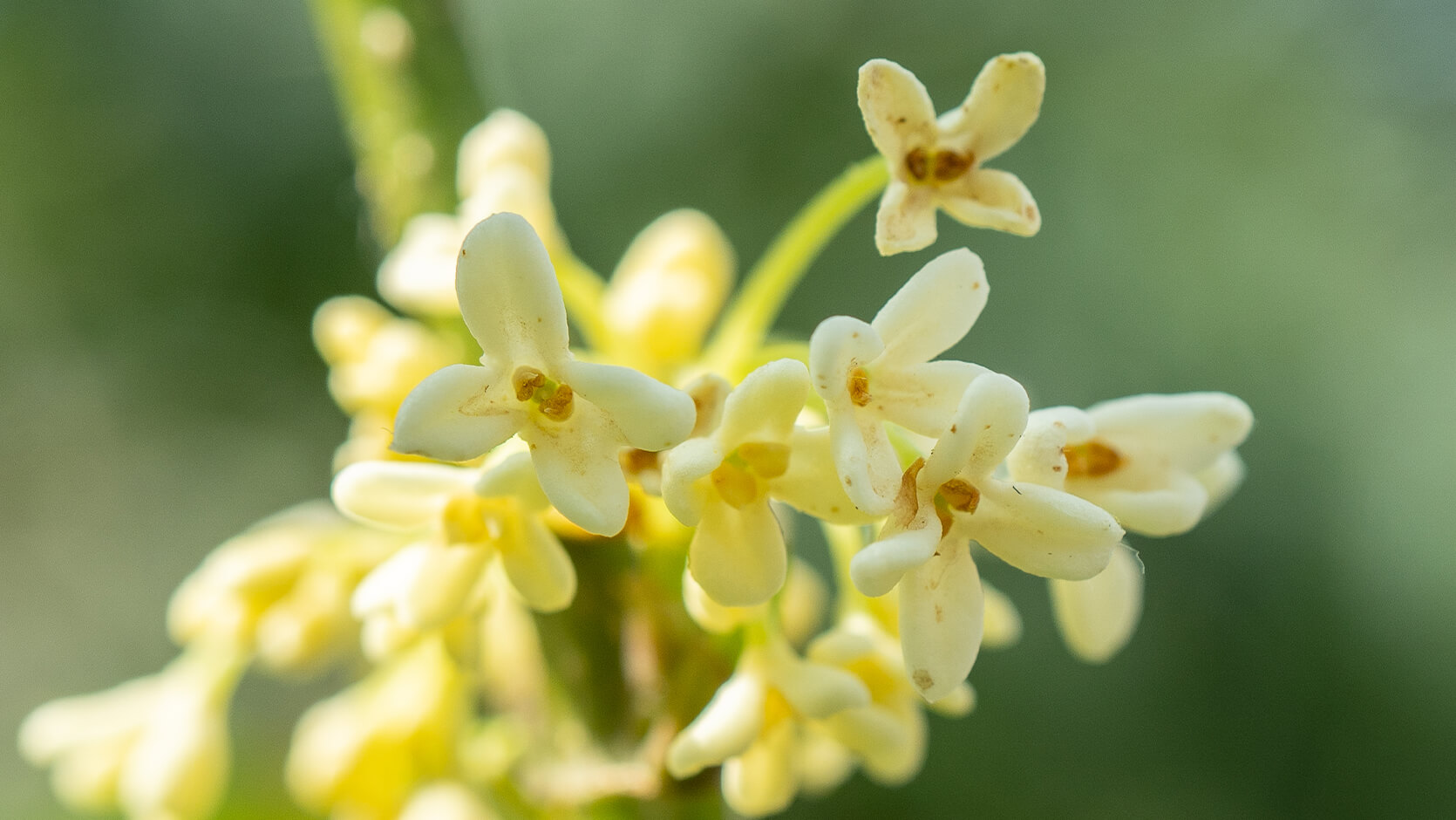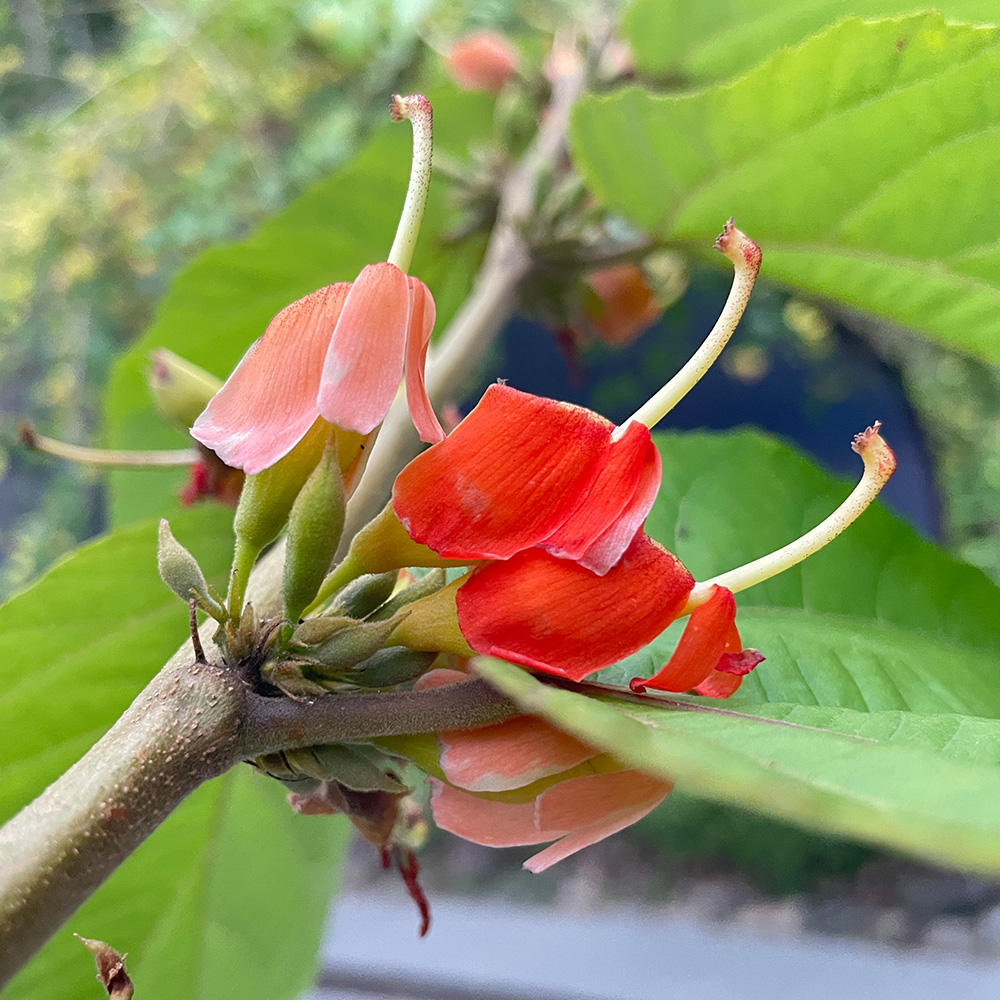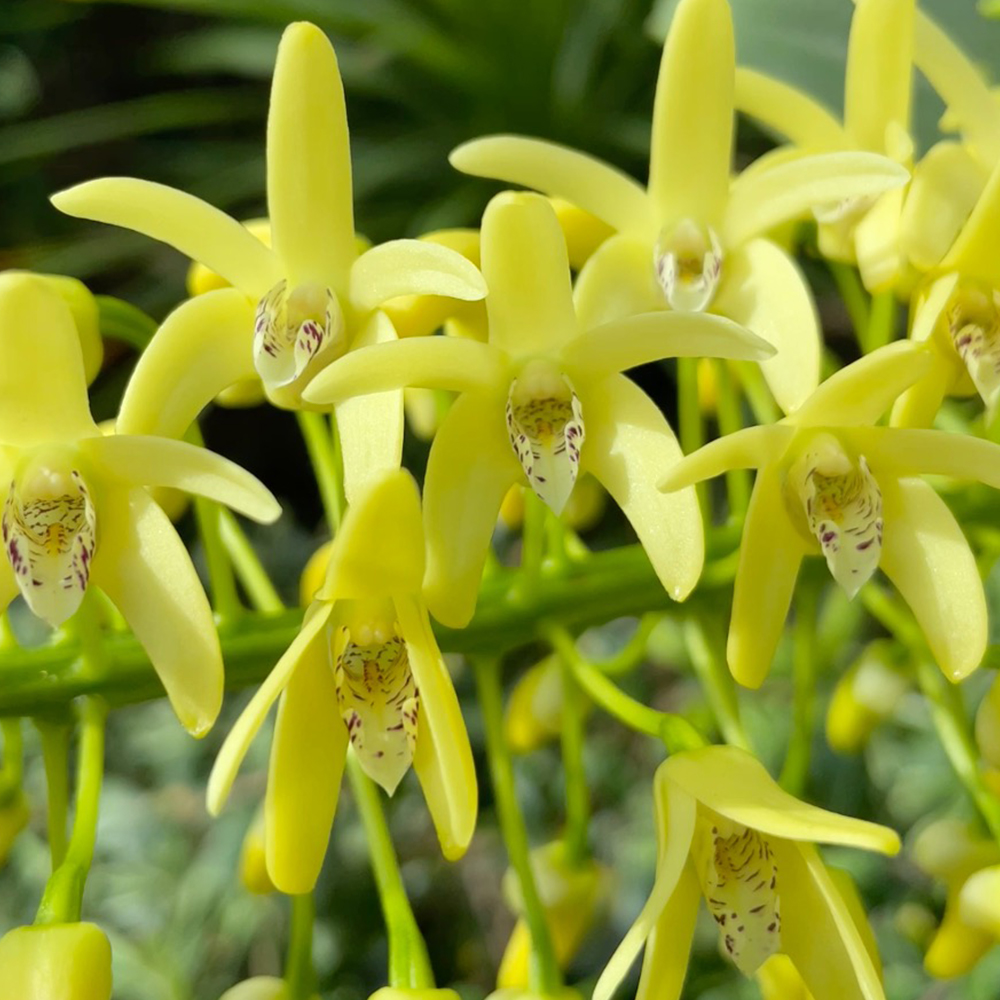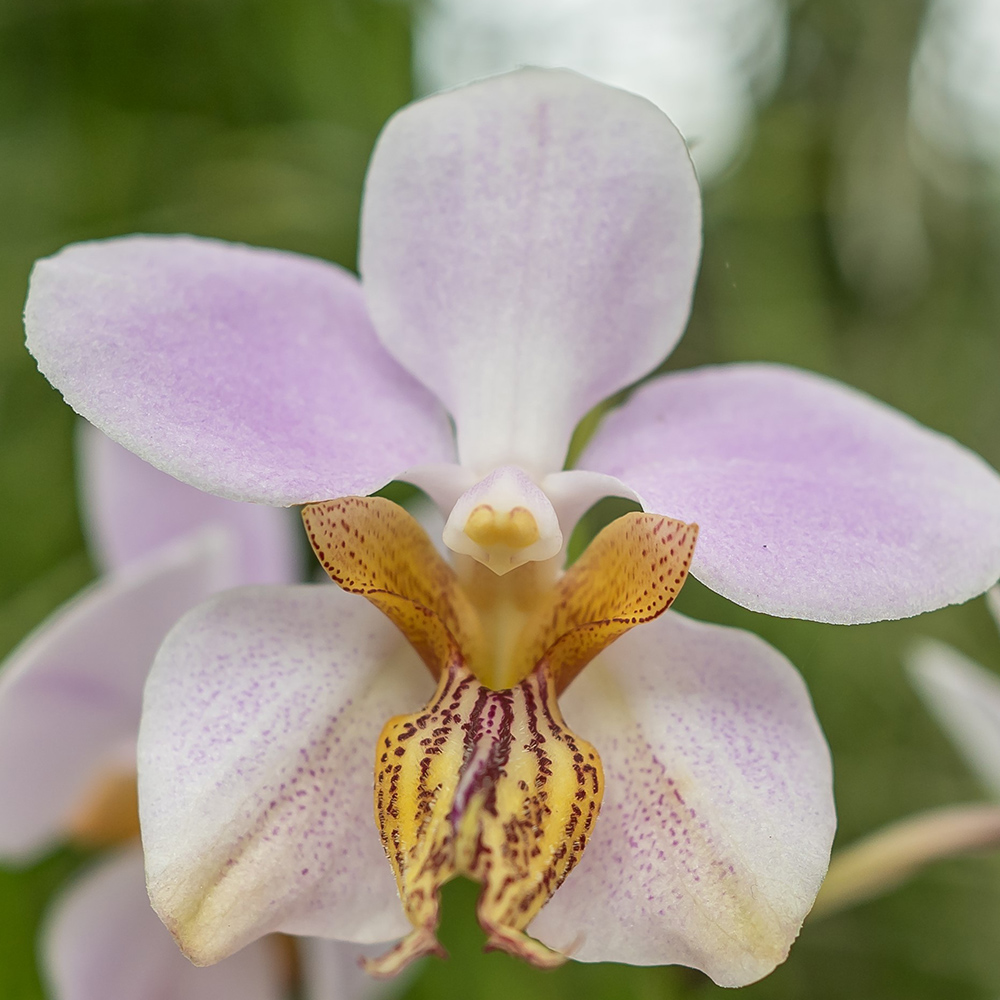Lipstick Tree (Bixa orellana)
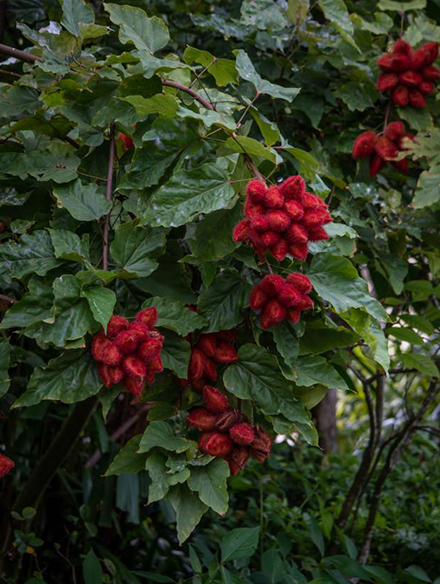
Bixa orellana, also known as the lipstick tree, is a small tree or shrub native to tropical regions in Mexico, Central America, South America and the Caribbean. Its five-petaled, rose-like flowers vary from white, pink or light purple. The scarlet fruit is densely cloaked with long bristles and splits when dry to reveal small seeds covered in a layer of waxy, bright red pulp!
These seeds are used as a culinary spice, food colourant and commercial dye. Soaking the seeds releases yellow-orange and bright red pigments. Tracing back to ancient times, the Aztecs used the pigment to deepen the colour of chocolate drinks, while the Mayans painted the dye on their bodies as a natural sunscreen and insect repellant. Annatto is an alternative food colourant to the much more expensive saffron, turmeric, and paprika. It is used to tint butter, margarine, cheese, rice and ice creams hues of golden yellow or orange. Other uses include the dyeing of textiles or crafts, and manufacturing of cosmetics products, such as lipstick.
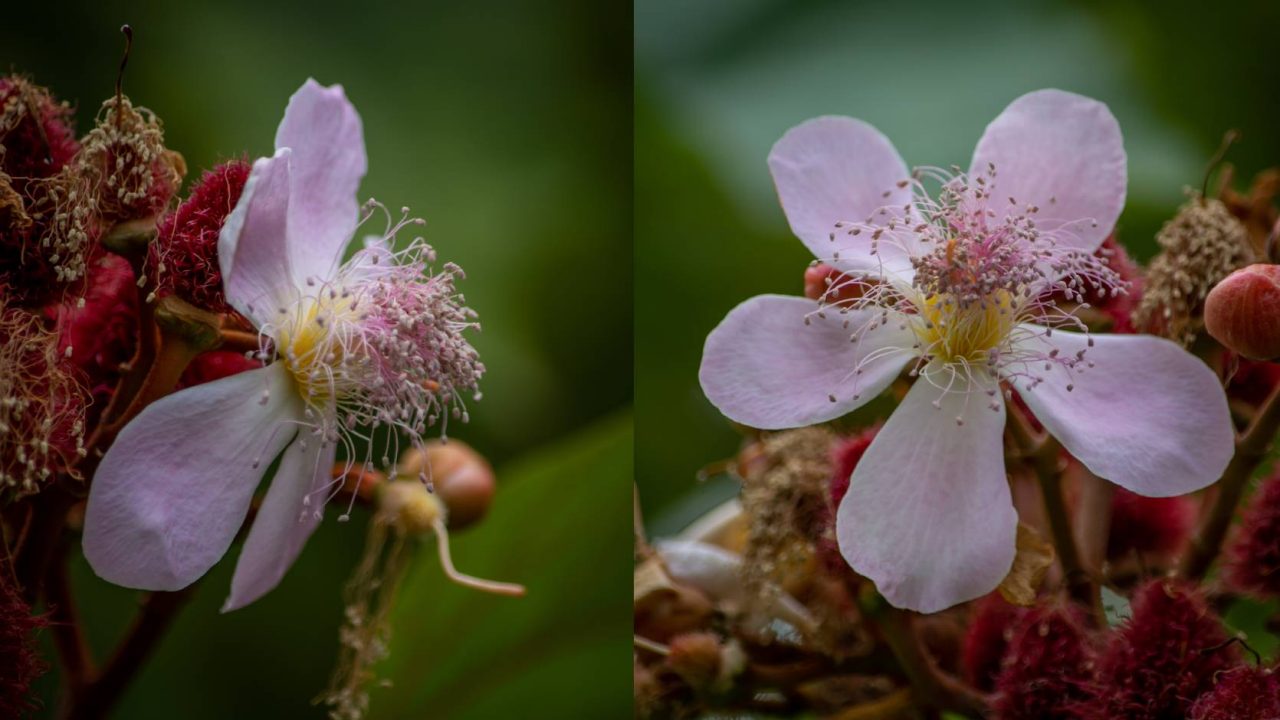 Rose-like flowers with numerous violet-coloured stamens.
Rose-like flowers with numerous violet-coloured stamens.
Bixa is the only genus of the Bixaceae family. Only B. orellana is widely cultivated and naturalized in other tropical regions of the world. The specific epithet honours Francisco de Orellano (1511-1546), a Spanish explorer and conquistador, and the first European to navigate the length of the Amazon River.
Look out for this wonderful plant when you exercise along the perimeter route of Marina Gardens Drive!
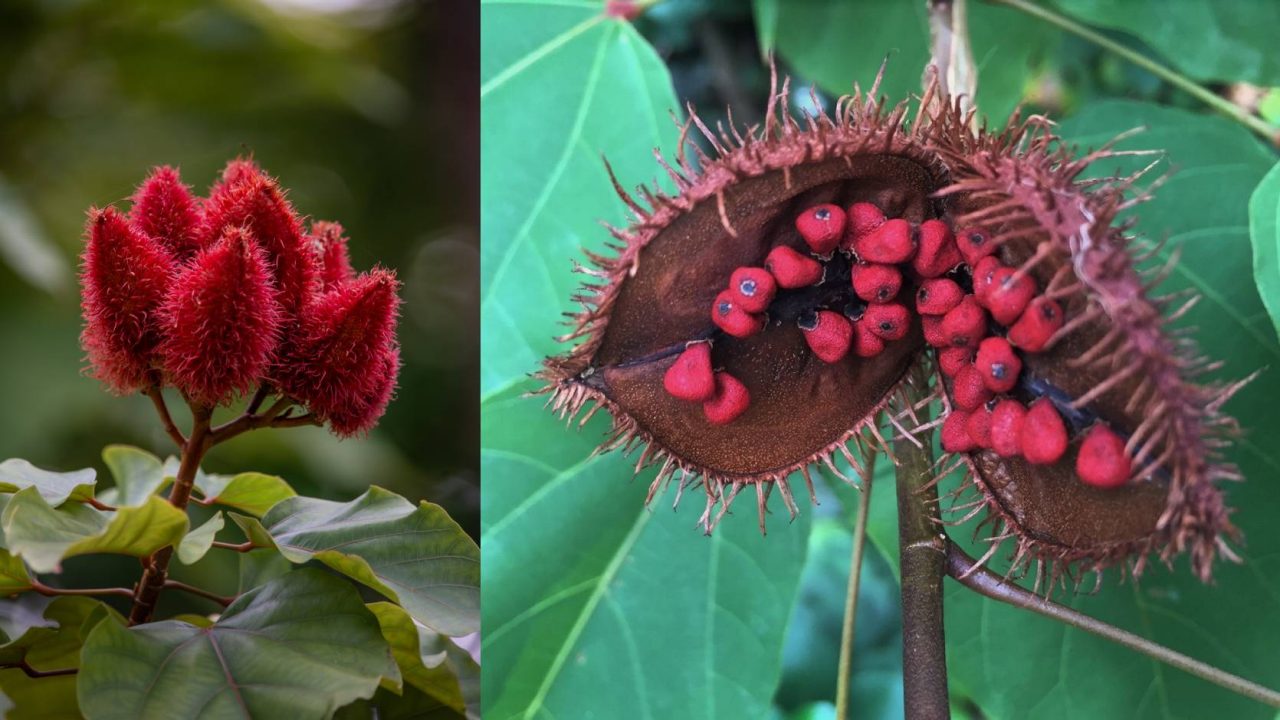 Scarlet dehiscent fruits (capsule) and seeds of B. orellana.
Scarlet dehiscent fruits (capsule) and seeds of B. orellana.
Written by: Ziana Yacob, Senior Manager (Research and Horticulture)
Ziana's fascination with the many wonders of plants led her to study Horticulture. She has been involved in propagating and nurturing in-house plant collections, with a special focus on orchids. Keeping plants thriving is both a rewarding challenge and a continuous journey of learning for her!
